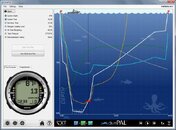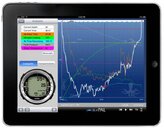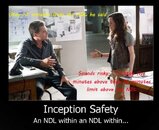Oh that explains a lot. Maybe the instructor wants you to not exceed the no-deco limit by more than 10 minutes then..
Also the advice of hitting your safety stop at a time when your computer gives you just 10 more minutes of no deco time......, would probably require that you do a 15 or 20 hour long dive, (assuming the SS stop was around 20 feet).
This was a general directive to all divers.









